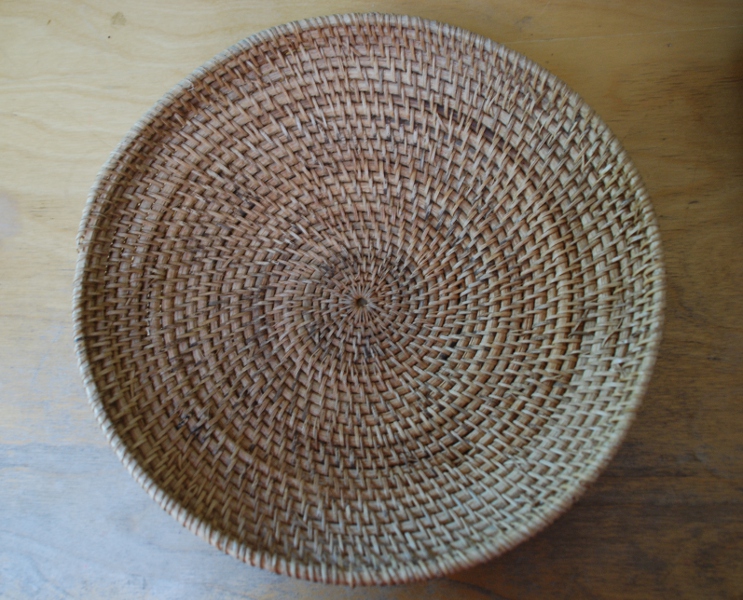Last night we returned from two weeks on vacation to an empty refrigerator and no bread whatsoever. While traveling, I did not rush around looking at bakeries, sampling the fine local breads, searching for flour, or any other such thing. The only homage to bread I inflicted on my family was a wee bit of shopping for baskets. First I bought a basket which I had a vague notion I would proof bread in. Yet as soon as I made my purchase, I realized that I would never, never pollute it with flour and wet dough and suchlike:

Which meant that I needed another basket for proofing. This eventually manifested as:

which when purchased I immediately started to question. Yet basket and no bread means:

and

and finally a bit of bread to eat:

The bread was loosely based on Pan de Horiadaki, but I wasn't much in the mood for following directions after a long trip home. So let's call it Pan Tipo de Horiadaki or Sorta Horiadaki. Anyhow, it was nice to have bread in the house again. And the basket isn't too messed up.
And incidentally - in neither of the two stores where I bought the baskets did the sales people know what they were - i.e., who made them, where they came from, etc. In the second store they said their Indian crafts vendor showed up in the middle of the night and placed his merchandise in the store and only barked at them if they asked him any questions. So, does anyone out there have any idea what type of baskets these are? First bought in Estes Park, CO, second in Boulder.
I'll close with a little Rocky Mountain splendor:
